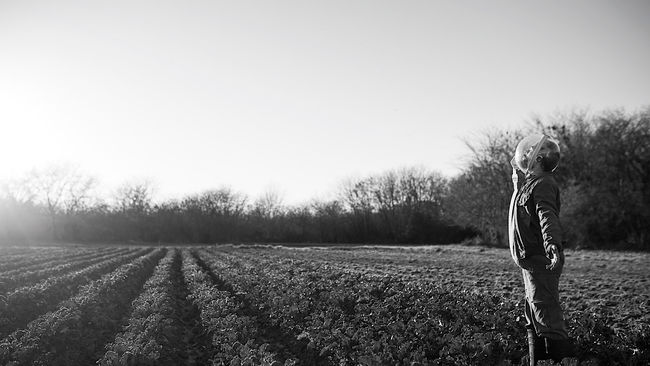"May You Only Take The Trouble To Practice Poetry"
04 February 2017
The film installation Manifesto by German-born filmmaker-visual artist Julian Rosefeldt is a tribute to the power of art and a reminder about the role of artists in a society. A powerful mix of cinema, theatre, poetry, and performance, the film has Oscar-winning actress Cate Blanchett brilliantly portraying 12 characters – ranging from a homeless man to a kindergarten teacher, and delivering monologues with lines borrowed from manifestos written by different artists in different points of time in the history.
Shot in Berlin, Manifesto is a visually stunning, wild movie. There is rarely a synchrony between the scenes and the monologues. Yet the absurdity that it results in, is thoroughly enjoyable. As a doll-maker, holding a miniscule version of herself, Blanchett tells the camera, "May You Only Take The Trouble To Practice Poetry" – a line adapted from André Breton’s Manifesto Of Surrealism. It is effortlessly humourous. To a class of kindergarten students, she says (with a straight face), “Nothing is original... I want you to remember what Jean-Luc Godard said, ‘it's not where u take things from, it's about where u take things to’.” And the kids nod in agreement.
Commissioned by the Art Gallery of NSW and ACMI, Manifesto was first shown in Melbourne (9 December 2015 – 14 March 2016). At museums, the film was screened on 13 screens with Cate delivering monologues from each of them, and the audience is given a catalogue which guides them through the whole film.
Manifesto was screened at the 46th International Film Festival Rotterdam.
Deep Gold
What inspired you to make Manifesto?
Almost six years ago, Cate Blanchett and I were introduced to each other by a mutual friend at the opening of an exhibition of my work in a museum in Berlin. That evening, we had an idea to collaborate in a project. It took me two years to figure out what I wanted to do. I was then researching for another project, Deep Gold, during which I came across two manifestos written by a futurist artist from France. I enjoyed the energy of these texts and went deeper into readings manifestos, written not just by artists, but architects, filmmakers, writers, and political scientists. Thus I found what I had been looking for. These manifestos have a peculiar utopian, yet useful visionary energy.
Isn't it surprising that these texts, written in such a far away past, still hold true?
In Manifesto, there is one line from Communist Manifesto which was written in 1848. "All that is solid melts into air". Others are from manifestos written in the beginning of the 20th century. Nevertheless the texts sound are of contemporary relevance. They make a lot of sense because I think they teach us that artists can be seismographs of the time. They sense something is going on in the world, and they express it in their way.
Some of these texts contradict each other. That was the way I worked on these texts. Like a bunch of friends sitting around a table and having a heated discussion, not agreeing on everything, but sharing ideas and a common spirit. These texts have the rebellious spirit and the potential to fuel changes in history.
Most of these texts were written by the artists in their formative age, says Julian.
When you see the list of artists whose manifestos I have used in the film, you might feel that they are all well known, accomplished personalities. But in fact, the manifestos were written when these artists were just starting to find excitement in life. Before they created the works we now know them for. They wrote these texts, maybe, at the time when they were just moving out of their parents' house, when their life was not very secure. There is a newly discovered anger in their voice. That age is very typical.









